Wat Phra That Doi Kong Mu
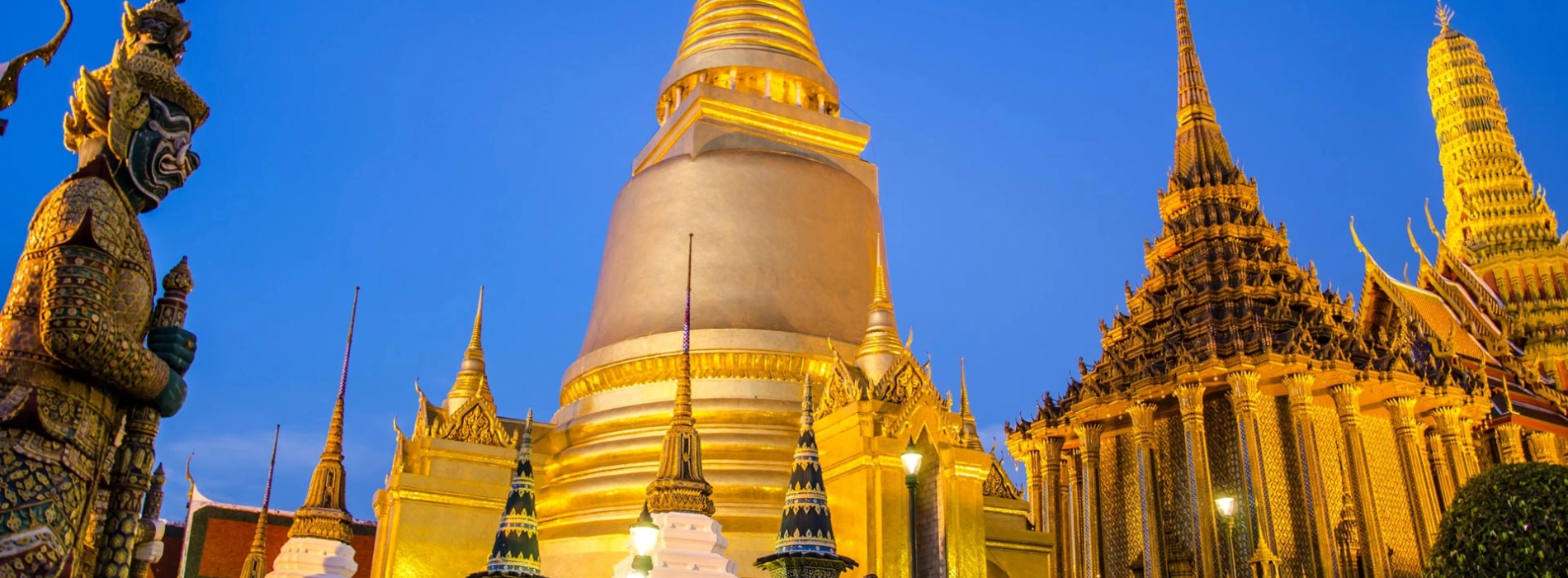
Wat Phra That Doi Kong Mu, perched atop Doi Kong Mu hill in Mae Hong Son, Thailand, is a venerable Buddhist temple steeped in history and cultural significance. Founded in the early 19th century, the temple's architectural charm reflects the distinctive style of northern Thai temples, adorned with intricate details and golden embellishments. The main attraction is a revered chedi believed to house relics of the Buddha, drawing pilgrims seeking spiritual solace. Beyond its religious importance, the temple offers a cultural immersion, inviting visitors to explore Thai traditions and Buddhism. The highlight, however, lies in the panoramic views from the temple grounds, providing a breathtaking vista of Mae Hong Son town and the surrounding mountains, particularly enchanting during sunrise and sunset. Wat Phra That Doi Kong Mu stands not only as a sacred site but also as a serene haven for reflection and meditation, contributing to the cultural tapestry of this charming northern Thai town.
Wat Phra That Doi Kong Mu has a rich history that adds to its cultural significance. While specific details might vary, the temple's origins are generally believed to date back to the early 19th century. It was founded during the reign of King Muang Kaew, the fifth ruler of the Pha Muang dynasty, which governed the region at that time.
The temple's establishment is attributed to the influence of Phra Moggallana, a highly respected monk. According to local legend, Phra Moggallana discovered an ancient chedi containing relics of the Buddha on Doi Kong Mu hill. This discovery led to the construction of Wat Phra That Doi Kong Mu to enshrine these sacred relics, making it a significant pilgrimage site for Buddhists.
Over the centuries, the temple has undergone renovations and expansions, reflecting the evolving architectural styles of the time. The intricate details and golden adornments seen in the temple today are the result of these continuous efforts to maintain and enhance its spiritual and cultural significance.
Throughout its history, Wat Phra That Doi Kong Mu has played a central role in the religious and cultural life of the local community. The temple has been a place for worship, meditation, and community gatherings, contributing to the spiritual well-being of the people in Mae Hong Son.
Visitors to Wat Phra That Doi Kong Mu can witness the layers of history in the temple's structures, sculptures, and religious artifacts. The historical context adds depth to the cultural experience, allowing individuals to appreciate not only the architectural beauty but also the enduring legacy of Buddhism in the region.
Wat Phra That Doi Kong Mu boasts several captivating attractions that draw visitors seeking both spiritual and cultural experiences.
The Main Chedi (Stupa)
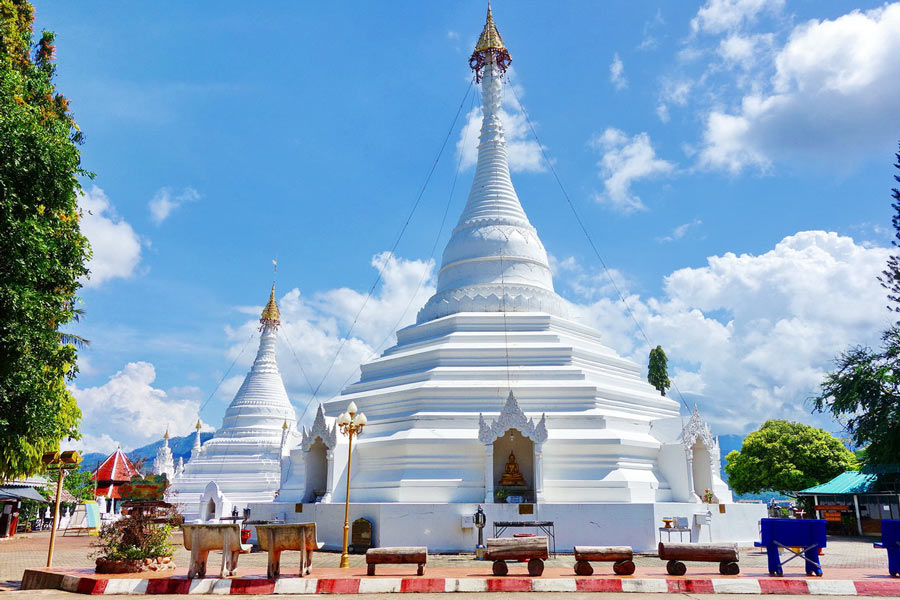
The largest chedi was built in 1860
At the heart of the temple stands the main chedi, a towering structure that enshrines relics of the Buddha. This sacred stupa is the focal point of worship and pilgrimage for Buddhists, and its intricate design reflects the cultural and artistic heritage of northern Thailand.
Panoramic Viewpoint

The sight of the panoramic viewpoint from Wat Phra That Doi Kong Mu
The temple's elevated location on Doi Kong Mu hill offers visitors a breathtaking panoramic view of Mae Hong Son and its picturesque surroundings. The viewpoint is particularly popular during sunrise and sunset, providing a serene and awe-inspiring backdrop for contemplation and photography.
Ubosot (Ordination Hall): The Ubosot is the main hall for Buddhist rituals and ceremonies. Adorned with traditional Thai art and religious symbols, the hall provides a tranquil space for prayer and meditation.
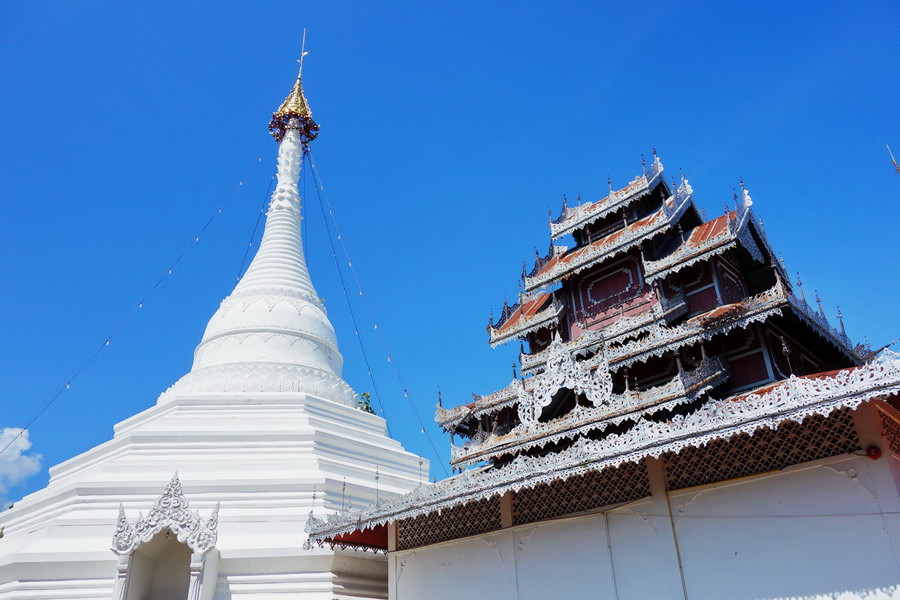
Ubosot serves as a place for Buddhist rituals, ceremonies, and religious activities
Naga Staircase: Ascending to the temple involves climbing a staircase guarded by intricately crafted Naga serpent balustrades. These mythical serpents, a common motif in Thai Buddhist art, add a touch of symbolism and cultural richness to the ascent.

The Naga Staircase is adorned with Naga, mythical creatures of Hindu and Buddhist
Buddha Statues: Throughout the temple complex, visitors will find various Buddha images and statues, each with its own unique pose and significance. These sculptures contribute to the overall spiritual ambiance of the site and offer opportunities for reflection.
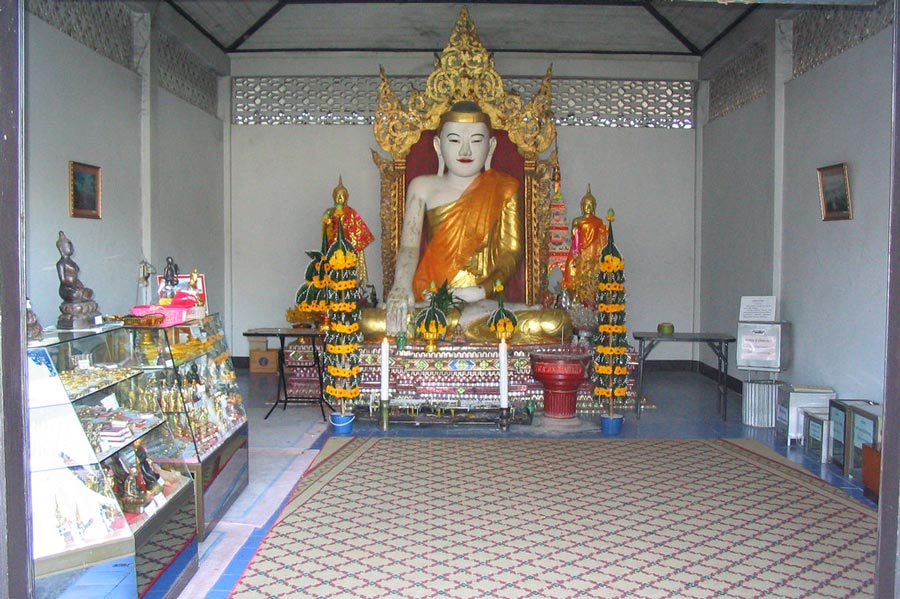
Buddha statues are physical representations of Siddhartha Gautama
The bells of the Temple: The temple compound may include the bells, where visitors can ring the bells as a symbolic act of merit-making. The resonating sound is believed to bring positive energy and blessings.

The bells symbolize mindfulness, awakening, and the impermanence of all things
Festivals and Ceremonies
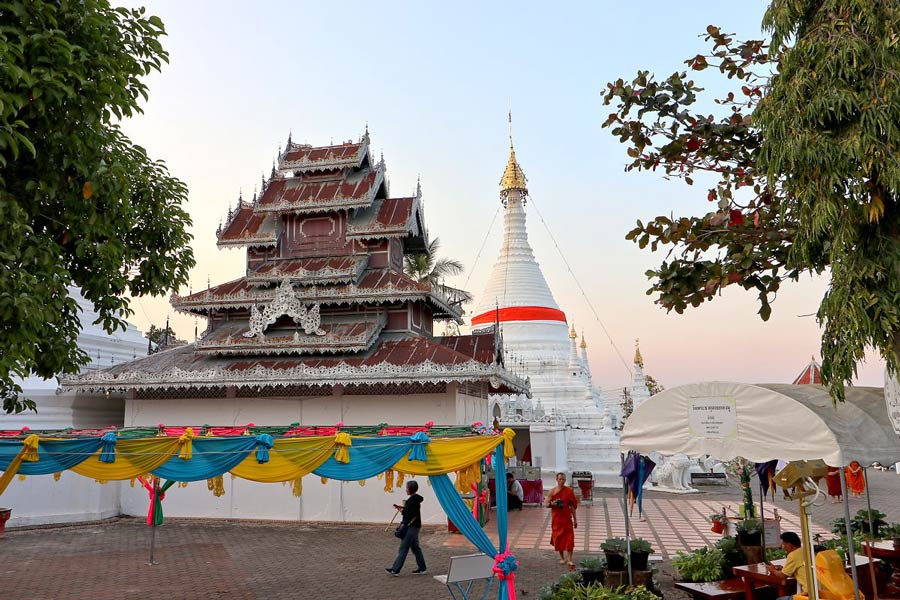
Festivals and Ceremonies
Timing your visit to coincide with traditional Thai festivals or special ceremonies can provide a unique cultural experience. The temple often hosts events that involve religious rituals, traditional performances, and community gatherings.
Accommodation: Accommodation costs vary widely. Budget guesthouses might start at $20 per night, mid-range hotels can range from $40 to $100, and luxury resorts can go beyond $150 per night.
Meals: On average, a meal at a local restaurant or street food stall can cost $5 to $15. If you choose mid-range or upscale dining, prices can range from $20 to $50 per person.
Entrance Fees and Donations: Entrance fees for Wat Phra That Doi Kong Mu are generally minimal, ranging from $1 to $5. It's customary to make a donation during your visit, and this can vary based on your discretion.
The best time to visit Wat Phra That Doi Kong Mu in Mae Hong Son, Thailand, is during the cool and dry season, which typically spans from November to February. During this period, the weather is pleasant, with cool temperatures ranging from 15°C to 25°C, providing an ideal climate for sightseeing and outdoor activities. The skies are clear, offering spectacular views from the temple, and the dry conditions minimize the chances of rain. This season is considered the high season for tourism, attracting visitors with comfortable weather and vibrant cultural experiences.
To reach Wat Phra That Doi Kong Mu in Mae Hong Son, Thailand, you typically need to travel to Mae Hong Son town first, as the temple is situated on Doi Kong Mu hill overlooking the town.
By Air: You can fly directly to Mae Hong Son Airport from Chiang Mai International Airport. Several airlines operate flights to Mae Hong Son, and the flight takes about 30-40 minutes. Upon arrival, you can take a taxi or other local transportation to the town and then proceed to Wat Phra That Doi Kong Mu.
By Bus: Buses from Chiang Mai and other major cities in northern Thailand operate services to Mae Hong Son. The journey by bus is longer compared to flying, but it is a more budget-friendly option. Once you arrive in Mae Hong Son town, you can use local transportation to reach the temple